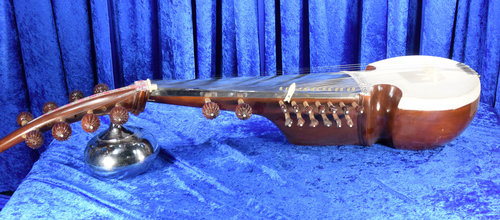
Sarod is an instrument which is derived from the rabab. It is not an ancient instrument, probably no more than 150 to 200 years. It is essentially a bass rabab. It has a metal fingerboard with no frets. The bridge rests on a taut membrane which covers the resonator. The sarod has numerous strings, some of which are drone, some are played, and some are sympathetic. The approach to tuning is somewhat similar to other stringed instruments. It is played with a pick made of coconut shell.
There are a number of artists who have excelled at this instrument. Today the most notable are Amjad Ali Khan and the late Ali Akbar Khan.
There are two common styles of sarod; there is the Dilli style and the Calcutta style. The Dilli style may be thought of as a “no frills sarod”. The Calcutta style on the other hand has several embellishments not found on the Dilli style. In particular the Calcutta sarod has a resonator at the neck, this is usually a brass bell. Additionally, the Calcutta style has a number of strings passing over a flat bridge (jivari) located at the neck. These strings necessitate the addition of several more tuning pegs.
| Are you interested in a secular approach to teaching Indian music. |
|---|
Indian music is traditional taught in a fashion that is linked to Hindu world views. But there are situations, often in schools, where this approach may not be the best. In such situations The Music of South Asia may be the best resource for you.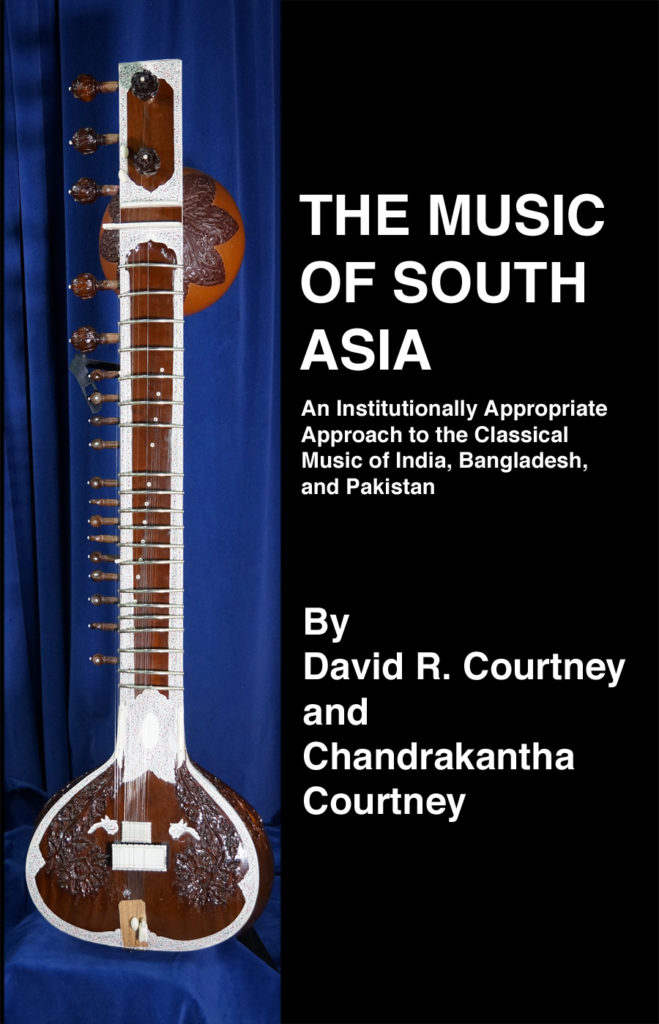 |
Photo Gallery
Click on image
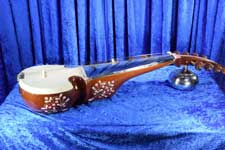
sarod (bottom side)
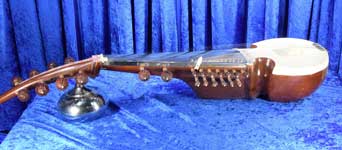
sarod (top side)
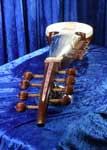
long view from front
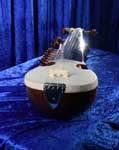
long view from back
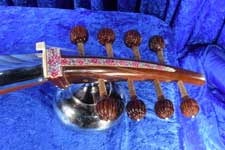
Tuning pegs
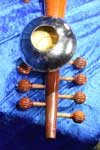
Tuning pegs and bell
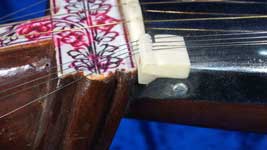
Javari

String and tuning peg
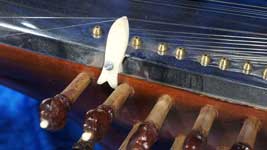
Chikari